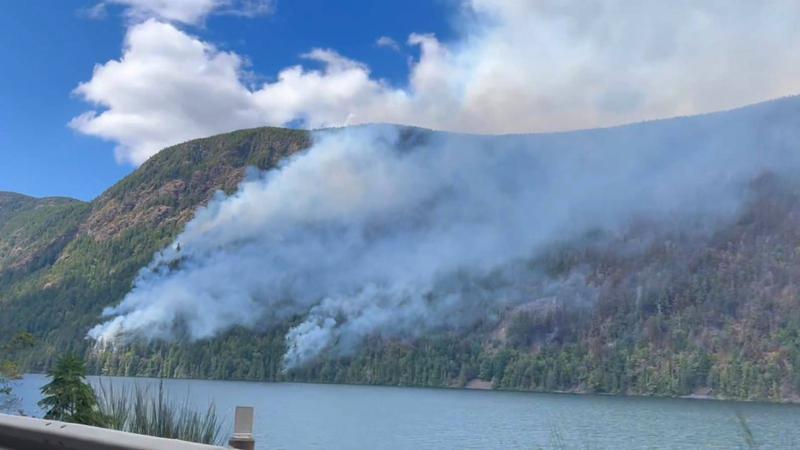She said they are in a “unified command” with the RDN, with continued support from the RCMP, local authorities, and nearby fire departments such as Dashwood and Coombs, as well as departments across Vancouver Island.

The size of the fire is based on the current available conditions on the ground and in the air, but can be difficult to judge at times due to the smoke limiting visibility, according to Dahl.
For Sunday, she said they will continue to focus on the protection of properties and infrastructure in the Little Qualicum River Village and Park area on the north side of Cameron Lake, as well as any critical infrastructure or properties in the vicinity of the wildfire, with roughly 75 members part of the structural protection team.
The evacuation order zone expanded Saturday night to include areas west of Cameron Lake as well as more properties to the north of Hwy. 4 on the eastern side of the lake.
The latest evacuation orders are available here.
Those under evacuation order are being taken care of at the Qualicum Beach Civic Centre, with capacity as a reception centre for around 200 people.
RDN director of the emergency operations centre Douglas Holmes, said as of Sunday at noon, 393 residents are under an evacuation order, and 238 are under evacuation alert, with evacuations going “smoothly” so far.
Other properties managed by the Regional District of Nanaimo are also being readied in case the number of evacuees grows further.
Holmes said the centre is for those evacuated with no other place to go, and encourages those who can to find shelter with friends or family, so the centre does not get overwhelmed.
They’re also asking people offering donations to the centre to hold on to them for now, as it would only add further strain on their manpower, with enough resources currently on-site to help those who need it.
“Despite the generosity and great intentions of folks, we really ask you to please hold off at this time. If we identify a need that we think can be helpful, we will publicize that widely…but for this time, we are asking you, do not bring any donations of any kind.”
The Centre is open 24 hours a day, with evacuees encouraged to register for provincial emergency support services either there in-person, or online at ess.gov.bc.ca, with 236 people registered thus far.
Holmes said the number of evacuees at the centre “fluctuates minute-by-minute”, with around 25 people at the centre on Sunday.
Dahl said they have no information on any damaged homes or structures, saying it would first come from the local authorities, who would contact the property owners first.
Cameron Lake remains closed to all on-water traffic, while officials are asking the public to remain very close to the shore on both Horne and Spider Lakes, as both are being used as water sources for helicopters and tankers.
Officials on Saturday also asked people not to stop along Hwy. 4 and watch the operation take place, as it creates a hazard on a vital highway link for central and western Vancouver Island, as well as a potential exit route for those on evacuation order.
The BC Wildfire Service also reiterated its warnings against the use of drones near the fire, as well as asking people on nearby lakes to give their air tankers and helicopters plenty of room to work.
The aircraft would be forced to abort their landing or water intake if there is any watercraft in their flight path, with the big air tankers requiring a large operating area.
Island Health issued an air quality warning on Sunday for regions south of Nanaimo, from Ladysmith to Duncan, with more information available here.
Highways 4 and 19 are still open, but motorists are asked to keep moving through the area and not stop to look at the wildfire in order to give crews room to work.
For current road conditions, visit DriveBC.ca.
We’re on Bluesky! Stay up to date on news across central Vancouver Island through Bluesky, by following @NanaimoNewsNOW.bsky.social.
info@nanaimonewsnow.com
Follow us on: Twitter (X) | Bluesky | Facebook

